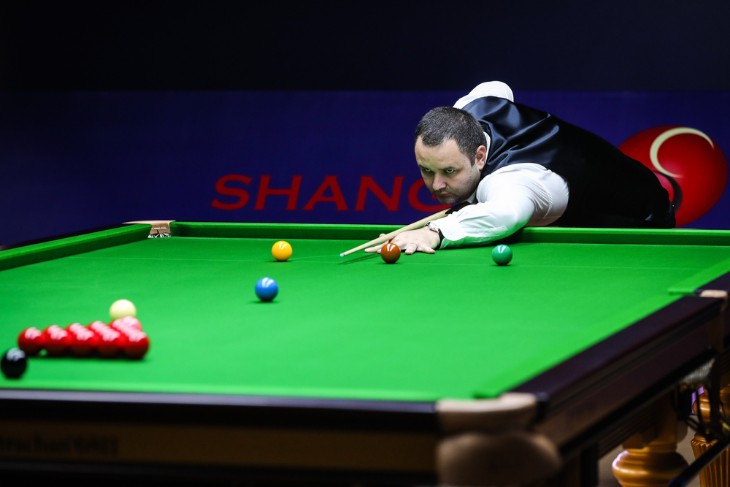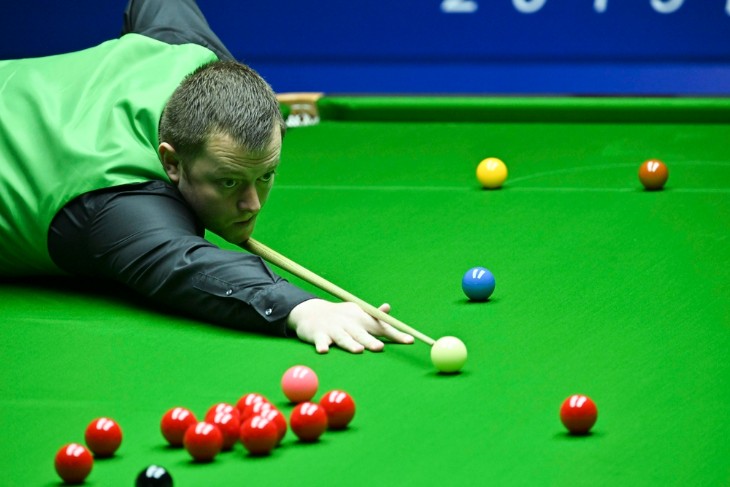- Technological Advancements in Snooker Broadcasting
- Influence of Social Media on Snooker's Popularity
- The Role of Global Tournaments in Snooker's Rise
- Snooker in Popular Culture and Media
- The Growing Diversity in Snooker
- Educational and Amateur Snooker Initiatives
- Future Trends and Predictions for Snooker
- Conclusion
The resurgence of snooker in the late 20th and early 21st centuries is inextricably linked to the emergence of iconic players who elevated the game to new heights. Figures like Steve Davis, Stephen Hendry, and Ronnie O'Sullivan have become household names, synonymous with mastery and charisma in the snooker world. Steve Davis's dominance in the 1980s, marked by precision and consistency, set new standards in professional snooker. His rivalry with Dennis Taylor, culminating in the memorable 1985 World Championship final, is often credited with igniting widespread interest in snooker.
Moving into the 21st century, players like Ronnie O'Sullivan and Stephen Hendry have continued to shape the sport. O'Sullivan, known for his remarkable talent and flamboyant style, has attracted a new generation of fans and players. Hendry, with his record-breaking achievements and strategic gameplay, has also played a pivotal role in popularising the sport globally. These figures have not only elevated the game through their skills but have also contributed to its growing appeal by becoming ambassadors of snooker, engaging with media and participating in global events, thus broadening snooker's reach and influence.
Technological Advancements in Snooker Broadcasting
The role of technology in the resurgence of snooker cannot be overstated, particularly regarding broadcasting innovations. The transition to colour television in the 1970s marked a turning point, making it easier for audiences to follow the action on the green baize. This change significantly enhanced viewer experience, as the distinct coloured balls became clearly distinguishable, adding to the game's visual appeal. Furthermore, the advent of digital television and high-definition (HD) broadcasts in the 21st century further amplified this effect, offering viewers an unprecedented clarity and immersion in the game.
In recent years, advancements such as multi-angle cameras, slow-motion replays, and virtual reality (VR) technologies have revolutionised how snooker is consumed. These technologies provide detailed analysis and insights, bringing fans closer to the intricacies of the game. Additionally, online streaming platforms have emerged as significant players in snooker broadcasting, facilitating global access to tournaments. This digital expansion has allowed snooker to reach a broader audience, transcending geographical barriers and appealing to a global fanbase.
Influence of Social Media on Snooker's Popularity
Social media has played a crucial role in snooker's resurgence by offering platforms for fan engagement, player interaction, and real-time updates. Platforms like Twitter, Facebook, and Instagram have enabled fans to connect with their favourite players and fellow enthusiasts, creating vibrant online communities. These digital spaces offer behind-the-scenes content, player insights, and live interactions, adding a personal touch to the professional sport. Such accessibility has helped humanise players, showcasing their personalities beyond the snooker table, thus forging a stronger connection with the audience.
Moreover, social media has been instrumental in marketing and promoting snooker events. Tournament organisers utilise these platforms for live updates, highlights, and promotional content, effectively reaching a wider audience. Viral moments, such as exceptional breaks or dramatic match conclusions, often gain significant traction online, drawing attention to the sport. This modern form of communication has not only sustained interest among existing fans but has also attracted new followers, particularly among younger demographics, thus contributing to the ongoing resurgence of snooker in the 21st century.

The Role of Global Tournaments in Snooker's Rise
The proliferation of global snooker tournaments has been a key factor in the sport's rising popularity. The World Snooker Championship, held annually at the Crucible Theatre in Sheffield, remains the most prestigious event, attracting a worldwide audience. Its history, tradition, and the prestige associated with winning the title make it a highlight of the snooker calendar. However, the expansion of the snooker tour beyond the UK and Europe has been instrumental in broadening the sport's appeal. The introduction of tournaments in Asia, particularly in China and Thailand, has tapped into a burgeoning fanbase, with these events now a staple in the professional circuit.
These international tournaments have not only brought top-level snooker to new audiences but have also encouraged the growth of the sport at a grassroots level in various countries. The success of players from diverse backgrounds, such as China's Ding Junhui or Thailand's James Wattana, has inspired a new generation of players in their respective countries. This global spread has led to a more diverse field of competitors at the highest level, increasing the sport's competitiveness and appeal. The internationalisation of snooker, through these tournaments, has transformed it from a predominantly British pastime into a truly global sport.
Snooker in Popular Culture and Media
Snooker's integration into popular culture and media has significantly contributed to its 21st-century resurgence. The sport has been featured in various forms of media, including films, television shows, and literature, often highlighting its unique blend of skill, psychology, and drama. These portrayals have helped to embed snooker within the broader cultural consciousness, reaching audiences beyond the traditional snooker fanbase. In film and television, snooker scenes are often used to convey tension, focus, and character depth, utilising the game's inherent drama to enhance storytelling.
Moreover, the media representation of snooker stars has added a layer of celebrity culture to the sport. Players are often featured in interviews, documentaries, and news segments, providing insights into their personal lives and careers. This media exposure has helped humanise the players, creating narratives that resonate with audiences and foster a deeper connection with the sport. Additionally, the emergence of snooker-related content on digital platforms, such as YouTube tutorials, podcasts, and online forums, has further solidified its presence in popular culture. This blend of traditional and new media engagement has been instrumental in maintaining snooker's relevance and appeal in the modern era.
The Growing Diversity in Snooker
The 21st century has witnessed a notable increase in the diversity within the world of snooker, both in terms of the players and the global audience. This diversification is a reflection of the sport's expanding reach beyond its traditional strongholds in the UK and Europe. The emergence of talented players from Asia, particularly China, has been a significant aspect of this change. These players bring new styles and perspectives to the game, enhancing its global appeal. The success of players like Ding Junhui and Marco Fu on the professional circuit has inspired a surge of interest in snooker in their home countries, leading to more participation and viewership in these regions.
Furthermore, efforts to promote gender diversity in snooker have also begun to take shape. While traditionally dominated by male players, the sport is seeing a growing number of female players at both amateur and professional levels. Initiatives to encourage women's participation in snooker, such as dedicated tournaments and development programmes, are slowly changing the landscape. This shift towards greater inclusivity is vital for the sport's continued growth and popularity, offering a more varied and comprehensive representation of talent in the world of snooker.

Educational and Amateur Snooker Initiatives
The role of educational and amateur snooker initiatives in promoting the sport has been increasingly recognised. These programmes aim to introduce snooker to a younger audience, fostering interest and skill development from an early age. Schools and community centres in various countries have begun to incorporate snooker into their physical education and extracurricular activities. This exposure at a young age not only cultivates playing skills but also teaches valuable life skills such as concentration, strategy, and sportsmanship.
Amateur snooker clubs and leagues play a crucial role in sustaining interest in the sport at a grassroots level. They provide accessible platforms for amateur players to hone their skills, compete, and share their passion for snooker. These clubs often serve as community hubs, bringing together individuals from diverse backgrounds over their shared love for the game. Furthermore, amateur tournaments and local leagues help in identifying and nurturing emerging talent, serving as a stepping stone for aspiring professionals. The support and development of amateur snooker are essential for the sport's long-term health, ensuring a continuous influx of new players and enthusiasts.
Future Trends and Predictions for Snooker
Looking towards the future, snooker is poised for continued evolution and growth, influenced by several key trends. One significant development is the increasing digitalisation of the sport. The rise of online streaming services and the growing influence of esports present new opportunities for snooker. Virtual snooker games and simulations are becoming more sophisticated, potentially attracting a younger, tech-savvy audience. Additionally, the use of data analytics and advanced statistics in professional snooker is likely to become more prevalent, offering deeper insights into player performances and game strategies.
Another trend shaping the future of snooker is the continued expansion into new markets, particularly in Asia and the Americas. This expansion is not just limited to professional tournaments but also includes grassroots development programs aimed at nurturing talent from diverse regions. The globalisation of snooker is expected to bring in new sponsors, increase prize money, and enhance the sport's overall status. Moreover, the emphasis on inclusivity and diversity, both in terms of gender and geographic representation, will likely continue, making snooker more accessible and appealing to a broader audience.
Conclusion
In conclusion, the resurgence of snooker in the 21st century is a multifaceted phenomenon, influenced by historical legacy, technological advancements, and cultural integration. The sport has successfully navigated the challenges of modern entertainment preferences, retaining its traditional appeal while adapting to contemporary trends. The globalisation of snooker has not only expanded its audience but has also enriched the sport with diverse talents and styles. Furthermore, the integration of snooker into popular culture and the rise of digital media have played crucial roles in maintaining its relevance.




.webp)


 (1).webp)




















